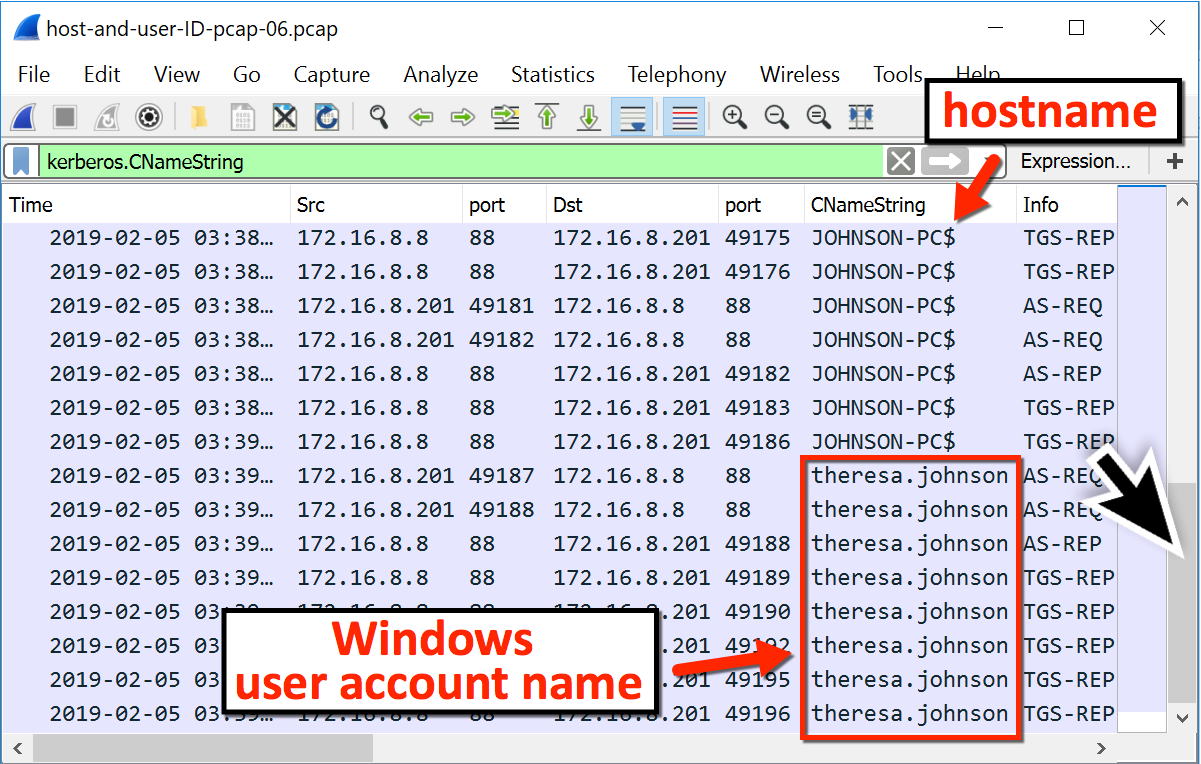


In this step, you will capture the network activity the ping program generates between your computer and the computer you are pinging.
*** Q3: Record the IP address for the machine now. If you do not, type ipconfig /release, then ipconfig /renew. Type ipconfig and see if you have an IP address on the 192.168.36 network. From the start menu, search for and run cmd.exe. Remove the orange cable, wait 10 seconds, and plug in the white cable into the same ethernet port. *** Q2: Write down in your lab report all the information in that dialog box. Go to: Start Menu -> Control Panel -> View network status and tasks -> Ethernet -> Details. Log in using your campus-wide Windoze login / password. Make sure the machine is on the orange network. Boot the computer next to you into Windoze. Explicitly identify in your document the interface Name, MAC address, IPv4 address, and IPv6 address. For the one interface that is UP and has carrier, copy the output from ip addr to your document. If it is connected to the orange network, remove that ethernet cable, wait 10 seconds, and then plug in the white ethernet cable. Make sure your computer is only plugged in to the white ethernet cable. (The following is done on the Linux machine.).  For the pair of you, reboot the machine and choose "Local ISO Boot" and "Linux Mint 18.2". gets you started with the network monitoring program wireshark. investigate the interface information stored on a Linux box and Windows box, and,. I recommend you use a google doc to record your answers. *** = write down and submit answers to these questions/problems. Are these the same? 6.CS332: ip addr and wireshark CS 332 Lab: Monitoring Network Protocol Behavior What is the source and destination IP address? Compare the source to your IP address. Before retrieving each image, does your host issue a new DNS query? Why or why not? 5. To what IP address is the DNS query message sent? Compare this IP address to your local DNS server IP address. What is the destination port for the DNS query mes- sage? What is the source port of the DNE response message? 3. Are these packets sent over UDP or TCP? 2. Locate the DNS query and response message for In Figure 5-27, they are packets 27 and 28. Stop packet capture after the Web page is loaded. Open Wireshark and enter “ip.addr=your IP address” into the filter to only capture packets that either originate or are destined for your computer.
For the pair of you, reboot the machine and choose "Local ISO Boot" and "Linux Mint 18.2". gets you started with the network monitoring program wireshark. investigate the interface information stored on a Linux box and Windows box, and,. I recommend you use a google doc to record your answers. *** = write down and submit answers to these questions/problems. Are these the same? 6.CS332: ip addr and wireshark CS 332 Lab: Monitoring Network Protocol Behavior What is the source and destination IP address? Compare the source to your IP address. Before retrieving each image, does your host issue a new DNS query? Why or why not? 5. To what IP address is the DNS query message sent? Compare this IP address to your local DNS server IP address. What is the destination port for the DNS query mes- sage? What is the source port of the DNE response message? 3. Are these packets sent over UDP or TCP? 2. Locate the DNS query and response message for In Figure 5-27, they are packets 27 and 28. Stop packet capture after the Web page is loaded. Open Wireshark and enter “ip.addr=your IP address” into the filter to only capture packets that either originate or are destined for your computer.










